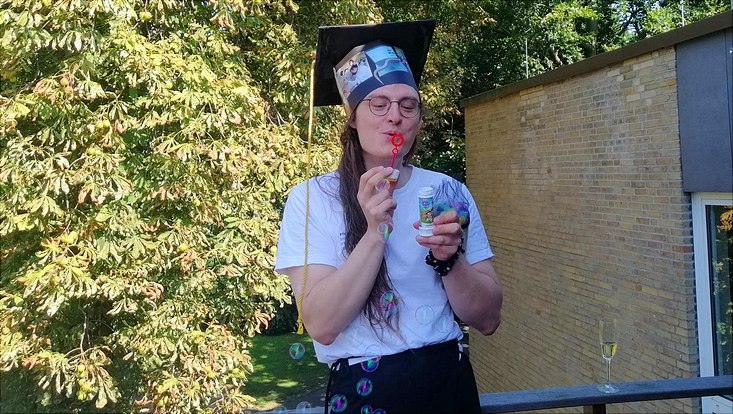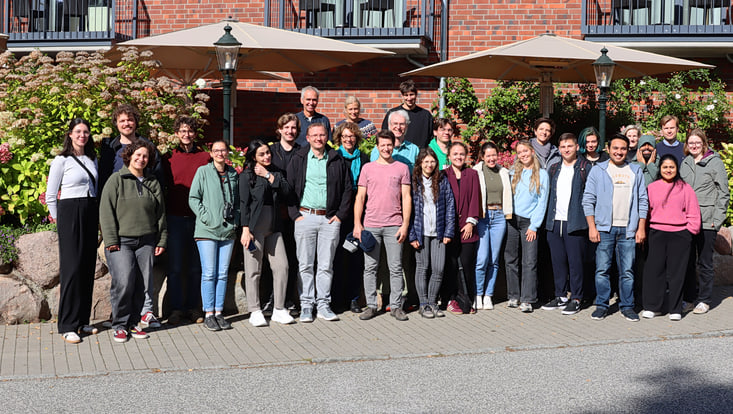Congratulations on your doctorate, Laurin Steidle!
25 November 2024, by RTG2530

Photo: UHH/RTG2530/Stirn
On September 6, 2024, Laurin Steidle successfully defended his doctoral thesis entitled “On the fate of Phytoplankton in the Elbe estuary: Examining the community collapse from a Lagrangian perspective” in the lecture hall of the Institute of Marine Ecosystem and Fishery Sciences at the University of Hamburg.
"It feels good to finally put everything on the table". With these words, Laurin Steidle describes the defence of his doctoral thesis, referring to the long journey that preceded this special day and led him to the collected findings that he could now present. His journey at the RTG 2530 began in 2020, with the intention of conducting research on a concrete and practical topic after his physics studies, which were mainly theoretical and abstract. He was also interested in the urgency of the issues surrounding climate change.
As a physicist, he was already familiar with developing model simulations and handling large amounts of data - both key elements of his research. He developed a model with Ross Vennell from the Cawthron Institute in New Zealand and applied it to his research. Using this 'ocean tracker', he was able to study the behaviour of phytoplankton in the Elbe estuary.
Phytoplankton is an important food source for many living organisms and is of great importance for the ecosystem and the CO2 balance. Phytoplankton species carry out photosynthesis by absorbing carbon dioxide from the water and using light energy to convert it into sugars or oxygen. The tiny organisms cannot move on their own and are usually carried downstream into the sea by currents.
With his model, which takes into account both the physical and biological factors of the Elbe estuary – such as currents and tides, organisms' sinking and rising, and reproduction – Laurin Steidle has been able to show that part of the phytoplankton community remains in the estuary. Another of his studies shows that some organisms are drawn to the bottom of the river, where they cannot survive. This is probably due to their attachment to suspended matter in the water.
His research findings, among other things, underline the importance of shallow water zones and marshes for the survival of phytoplankton. There is less turbulence, more light, and, therefore, more favourable conditions for the plant world. However, these zones are heavily influenced by human interventions such as harbor expansion and river deepening. These measures have long-term effects on the ecosystem, even if they took place many years ago.
Laurin Steidle's research makes an important contribution to understanding the complex interactions in the Elbe estuary and sheds light on the possible effects of human intervention on the ecosystem. As part of his postdoctoral position at the University of Hamburg, he will continue focusing on developing and optimising model concepts.


